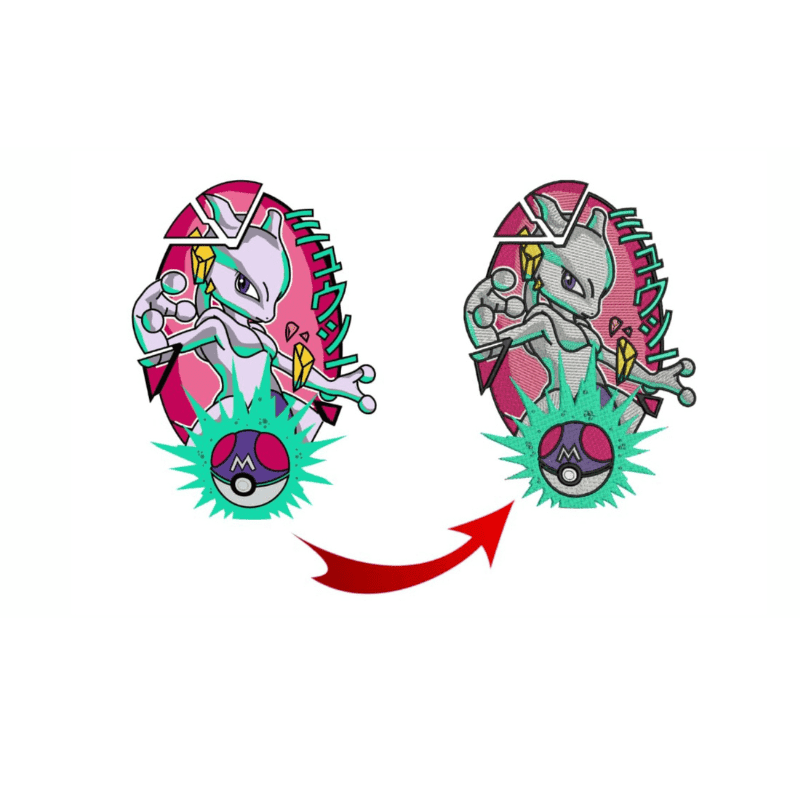Professional Digitizing for Embroidery: Quick and Reliable Solution
Professional Digitizing for Embroidery: Quick and Reliable Solution
Blog Article
Mastering the Needlework Digitizing Refine: Your Ultimate Guide
Embroidery digitizing is a thorough craft that needs accuracy and expertise to translate intricate designs into digital layouts for maker embroidery. As craftsmens begin on this trip to understand the needlework digitizing process, a thorough understanding of the fundamentals establishes the foundation for excellence. Past the basic expertise exists a realm of innovative software application, specialized devices, and nuanced strategies waiting to be discovered. By diving right into the subtleties of digitizing, one can open a world of innovative opportunities and boost their needlework projects to new heights.

Comprehending Needlework Digitizing Fundamentals
Embroidery digitizing essentials form the structure upon which elaborate designs are equated right into machine-readable styles for precise stitching. This initial action in the embroidery digitizing process is essential for guaranteeing that the last embroidered item is a devoted representation of the original layout. Recognizing needlework digitizing basics includes realizing vital ideas such as stitch kinds, stitch instructions, thickness, rug, and draw settlement.
Sew kinds play an essential function in establishing the visual and textural end result of the stitched layout. By choosing the appropriate stitch type, whether it be satin, fill, or running stitch, digitizers can accomplish the wanted result and boost the overall high quality of the needlework. Additionally, stitch direction influences the flow and measurement of the layout, while density figures out the spacing and protection of the stitches.
Furthermore, padding stitching offers security to the style by securing the fabric and avoiding distortion during the needlework procedure. Pull compensation is another vital factor to consider to neutralize the natural propensity of fabric to agreement when sewn. Understanding these needlework digitizing essentials is fundamental for creating professional-quality stitched products.
Picking the Right Digitizing Software Program
Selecting the ideal digitizing software is a critical choice that substantially impacts the performance and high quality of the embroidery digitizing process. Digitizing for Embroidery. When selecting the appropriate digitizing software, it is important to take into consideration factors such as the complexity of designs you prepare to create, the user-friendliness of the software program, the level of client assistance used, and the compatibility with your needlework device
There are numerous digitizing software program options available on the market, ranging from fundamental programs for newbies to innovative software for professional digitizers. Some popular choices include Wilcom EmbroideryStudio, Hatch Embroidery Software Program, and PulseID. These software provide a vast array of tools and functions to aid you develop elaborate layouts with ease.
Before making a choice, it is advisable to check out the various software program alternatives through totally free trials or demos to establish which one ideal fits your requirements. Furthermore, reviewing testimonials and seeking suggestions from skilled digitizers can give valuable understandings into the strengths and weak points of each software (Digitizing for Embroidery). By carefully examining your demands and comparing the functions of different digitizing software program, you can make an enlightened choice that improves your needlework digitizing process
Digitizing Tools and Techniques

Optimizing Design Settings for Embroidery
Grasping the ins and outs of design settings is fundamental in achieving optimal outcomes in the needlework digitizing process, structure visit homepage upon the foundation laid by understanding digitizing devices and techniques. When enhancing layout setups for needlework, it is necessary to take into consideration aspects such as stitch type, thickness, underlay, draw settlement, and registration. Registration settings straighten various components of the layout accurately, maintaining total style stability.

Troubleshooting Common Digitizing Issues
When experiencing typical digitizing concerns throughout the embroidery procedure, it is important to recognize the origin triggers and implement reliable remedies promptly. One common issue is stitch density issues, where stitches may be too thick, triggering the material to pucker, or as well thin, causing spaces in the layout. Changing the stitch thickness setups in the digitizing software application can help fix this problem.
An additional regular difficulty is thread breaks during the embroidery process. This can happen due to numerous factors such as inaccurate tension settings, dull needles, or making use of low-quality string. Guaranteeing proper maintenance of the embroidery machine, consisting of regular needle changes and stress adjustments, can lessen the incident of thread breaks.
Additionally, style enrollment mistakes can result in misaligned elements within the needlework design. Inspecting the style alignment in his explanation the digitizing software and making essential adjustments prior to sewing can aid in preventing this concern. By attending to these usual digitizing issues promptly and successfully, you can guarantee a smoother embroidery procedure and my company top quality ended up items.
Final Thought
To conclude, grasping the embroidery digitizing procedure requires a solid understanding of the fundamentals, the ideal selection of software application, and expertise of tools and strategies. Optimizing layout setups and fixing usual digitizing concerns are important steps in guaranteeing high-quality embroidery results. By adhering to these steps vigilantly, one can attain precision and performance in the digitizing process.
Report this page